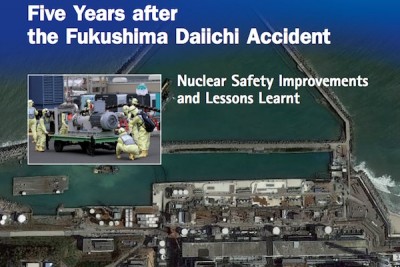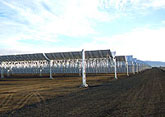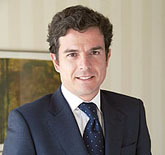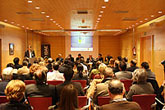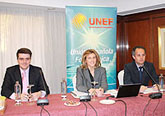The nuclear accident in Japan, at Fukushima-Daiichi nuclear power plant, had few consequences beyond the disaster. It caused a change in the safety measures of the plants around the world. So when five years have elapsed, the Foro Nuclear explains improvements in the Spanish plants that already have incorporated 80% of the measures agreed internationally.
Next March 11th marks five years since the earthquake and tsunami hit Fukushima-Daiichi nuclear reactors with negative consequences, and the global nuclear sector has published the report on their situation. In recent years, the Spanish nuclear power plants have implemented actions and measures to strengthen security and ensure the ability to withstand situations beyond their design basis.
The ENSREG Plan
The Spanish nuclear power plants have carried out actions aimed at ensuring the robustness of the facilities facing similar situations to those that occurred in the Japanese plant. The Action Plan by the European Nuclear Safety Regulators Group (ENSREG), issued in July 2012, following the completion of Resistance Testing at all European nuclear power plants, was meant to homogenizing actions to be taken in different countries. The Nuclear Safety Council (CSN) approved the National Action Plan in 2012 and its subsequent review in 2014.
In Spain, nuclear power plants are complying with the provisions of the National Action Plan and it may be considered that the planned activities are completed by more than 80%. This has resulted in a modernized Spanish nuclear fleet, which meets the most stringent levels of national and international security, and is an asset to value due to the stability it brings to the electrical system, the non-emission of greenhouse gases and its competitiveness.
Security measures
The main actions and measures that the Spanish nuclear power plants have implemented can be divided into two main groups:
1. Actions and measures of protection against natural hazards such as floods and seismic effects completed by almost 100%.
2. Strengthening prevention and mitigation systems, improving existing and adding portable and additional cooling systems even for the spent fuel pools that can operate in case of electrical isolation of the facilities. Implementation of a common external support center for emergencies (CAE) and a support center for emergency management at each site (CAGE). Many of these actions are already completed and others are in the final phase of implementation.
For the Foro Nuclear, (Nuclear Forum), the Spanish nuclear power plants are solidly prepared to face the events alleged in their design basis. In addition, the plants have additional margins to handle extreme events as well as their consequences beyond the design basis.
Five years after Fukushima
Nuclear power produces about 11.5% of electricity in the world. There are currently 442 reactors in 31 countries and 66 more are under construction. There are at least a hundred more reactors planned. In the EU, 14 of the 28 Union Member States have nuclear power plants in operation and four more units are under construction. There are a total of 131 reactors in operation, producing one third of the total electricity consumed in the whole EU.
The pillar around which nuclear activity develops is the safe operation of their facilities. After Fukushima, reviews and actions have been agreed and conducted at the international level to ensure the safety of installations. Moreover, the role of regulatory bodies is essential to ensure safety.
In the case of Japan, four of the 48 existing reactors are currently in operation. In June 2015 Japanese government approved a plan for nuclear energy to contribute between 20% and 22% of the country´s electricity generation mix in 2030.
And in Spain, in recent years, with an installed capacity of 7,864.7 MW, only 7.26% of the total, the seven reactors currently operating in Spain (Almaraz I and II, Ascó I and II, Cofrentes, Trillo and Vandellos II) work 24 hours 365 days a year. Specifically in 2015, the data show that they have operated 7,729 hours, 88.23% of the total.
Carlos Sánchez Criado
Publicista por la Universidad Complutense. Director comercial de publicaciones técnicas del sector de la energía durante doce años. Director de Energy News Events, S.L. desde 2012 difundiendo información en Energynews.es, movilidadelectrica.com e hidrogeno-verde.es. Y por supuesto, organizando eventos como VEM, la Feria del Vehículo Eléctrico de Madrid.




